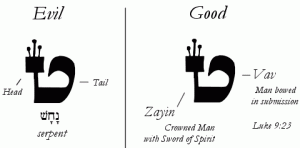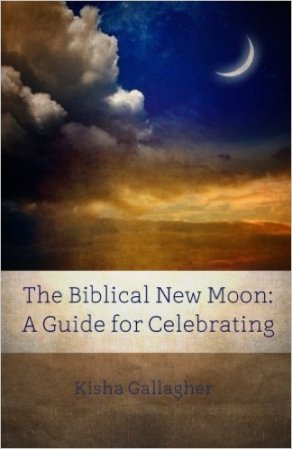This is another reference post to help with Bible study, symbolism, dream interpretation, etc. Related articles can be found on the Misparim page. For numbers 1-10, click here. Studying Dr. Hollisa Alewine’s The Creation Gospel has been extremely helpful in making many of these determinations. I hope you will take the time to learn her material for yourself. You will see her work reflected in numbers 1-7 in regard to the seven creation days, seven Spirits of Adonai, seven Feast days, seven Churches, and in the seven abominations.
Eleven achat esre [f.] echad asar [m.] Eleven is a tricky number, and the one in which I receive the most questions. People have a tendency to notice the clock when it is 11:11, and wonder what it means. If one feels plagued by seeing the number eleven, I suggest a careful read of Deuteronomy 1. From Mt. Sinai to the Promised Land was an eleven day journey, but due to Israel’s rebellion, they were in the wilderness for a total forty years. This message was reiterated to them in the eleventh month, Shevat, in the fortieth year. Hence, the full redemption and entry into the “Land” is connected to the number eleven, but also what prevents it.
So, eleven requires one to discern between the spirit of anti-messiah and the Messiah – remaining in rebellion or submitting to the King of kings. For example, Joseph was the eleventh son born to Jacob, and is a type of the Messiah – the Redeemer. Joseph was called the “master of dreams,” or mysteries/secrets. His life depicts many aspects of Yeshua with the number eleven playing a role in his prophetic dreams. (The sheaves and stars that bowed to Joseph were eleven. – Gen. 37) In the life of Yeshua, eleven disciples witnessed and revered the resurrected Messiah. Judas betrayed Him and then killed himself before the resurrection, making the disciples number eleven. (Mt. 28:16, Mark 16:14, Luke 24:9,23)
Most often, eleven has negative connotations. Stories with this number often revolve around rebellion, disorder, judgment, betrayal, idolatry, bribery, lack of trust in YHWH, being incomplete, and false authority/government. For example, lack in (12-1) or excess (10+1), both signify imperfection. There is an eleven day difference between the lunar and solar year (cycles). The lunar year is eleven days shorter and the solar year is eleven days longer. Interesting, considering the Jewish calendar favors neither, as it lunisolar. Esau produced eleven chieftains. He is characterized by the excess of eleven as he ruled by his appetite for more than he needs. One driven to amass wealth or excess of any kind needs to recognize that this beast/fleshly behavior actually achieves less, not more in the spiritual realm. Poor in the natural is akin to being rich in the spiritual realm; and being rich in the natural figures being poor in the spiritual realm. Messages of prosperity are dangerous for the Body as it leads to the spiritual depravity and lack of Esau, who is willing to sell his birthright for a bowl of “red stuff.” This concept is emphasized in the brother’s views:
Genesis 33:9-11 And Esau said, I have plenty, my brother. Let what you have be to yourself. [10] And Jacob said, No, please, if I now have found favor in your eyes, take my present from my hands. For I have seen your face, like seeing the face of God; and you are pleased with me. [11] Please take my blessing which has been brought to you, because God has favored me, and because I have everything. And he urged him; and he accepted.
Most translations use the same English word (typically: enough) in the bolded phrases in the above passage. But, Esau and Jacob use two different words to express their abundance. Esau says, “I have rav.” Whereas, Jacob attributes his wealth to God’s blessing and favor and says, “I have kol.” Having abundance, much or plenty alludes to the conclusion that there is still more to be gained. That was Esau’s choice of words. Whereas Jacob declared he had everything. This implies he had no lack and no need to strive for more due to God’s blessing and favor. There is a world of a difference between these two perspectives and ideologies. Again, which one describes you?
Eleven can also figure transition (moving back to 10 or ahead to 12). Consider the curtains that covered the Holy and Most Holy Place. There were FOUR curtains. The first (innermost) was made of linen, the second of goats’ hair, the third of rams’ skins, and the fourth of badgers’ (KJV) or marine animal skins. The second (goat’a hair) layer had eleven total curtains. (See Exodus 26.)
Exodus 36:14-16 (NASB) Then he made curtains of goats’ hair for a tent over the tabernacle; he made eleven curtains in all. [15] The length of each curtain was thirty cubits and four cubits the width of each curtain; the eleven curtains had the same measurements. [16] He joined five curtains by themselves and the other six curtains by themselves.
These four coverings were over the Holy and Most Holy Place of the Mishkan (Taberncale). What is the significance of the second layer having eleven curtains? The extra (excess) curtain in this case (the linen underneath had ten curtains) was doubled so it hung down and over the front and back of the Tabernacles. In this way, it concealed in the inner linen curtains. Linen figures holiness, righteousness, and purity. The covering of goat’s hair is reminiscent of one’s flesh, something that conceals the former. When a hairy Esau and his eleven chieftains submit themselves to Adonai, it is a very beautiful thing. The old nature must die for this this occur, like the goat’s that became part of the Mishkan.
Hence, eleven can figure the prophetic realm, but also its counterfeit, divination. Eleven often signals that one is doing what is “right in your own eyes,” the extreme opposite of the Holy Place. It’s action based on “I feel,” not “It is written.” It is ego and power driven to get one’s way. The Tabernacle teaches the opposite: dying to self.
In Daniel 7, a “little horn” arises from the ten horns of the terrible fourth beast, making it the 11th horn. This horn was epitomized in evil Antiochus Epiphanes, which is a type of the beast and antichrist, and the abomination that makes desolation. According to Daniel, this man and the spirit of the anti-christ seeks to CHANGE the times and law, that is the Torah and the Feast Days.
‘He will speak out against the Most High and wear down the saints of the Highest One, and he will intend to make alterations in times and in law; and they will be given into his hand for a time, times, and half a time. (Dan 7:25)
These are the “changes” that Antiochus decreed for Israel:
You shall profane the Sabbath. You shall profane the festivals and holy days. You shall set up idols. You shall eat unclean animals. You shall not circumcise your sons. You shall forget the Torah.
Thus, if the “prophetic” word one receives mirrors the actions of Antiochus and seeks to abrogate God’s Holy Law or His Holy Feast Days… run! It is not a Word from the LORD. It is a message for itching ears that seeks to please the appetites and lusts of the flesh. (A hairy Esau.)
Eleventh Hebrew Letter: Khaf Numerical value of twenty. Pictograph meaning an open hand or container, like a cup or a spoon. As a suffix, it shows possession or ownership. An open hand is one that receives, kabbalah. It’s interesting that Jewish mysticism or kabbalah depicts both sides of the number eleven. There are true prophetic things in kabbalistic teachings, but there is also a much more popular form that is mere divination. The number/letter also can mean similar. Our job is to discern the difference between two similar, yet different ideologies. Keter, the Hebrew word for crown, begins with the letter khaf, hinting at the place of authority. Who is the authority/crown of your life? Messiah or anti-messiah? The root of the Hebrew word for spoon is kafaf, which means to bend. Who are we bending/bowing to? In this sense, khaf has to do with submission.
- Jacob had to face Esau while his family was incomplete with 11 sons (Benjamin wasn’t yet born). He had to fight an “Angel of the LORD” all night long.
- Esau’s chieftains were eleven (Gen. 36:40-43) compared to Jacob’s twelve. Just reviewing the history of Esau’s lineage (Edom) makes it abundantly clear that he is associated with rebellion and living by the nephesh (beast/flesh).
- The wilderness journey was only eleven days, but rebellion cost Israel forty more years in the desert. Moses recounted this punishment to them on the first day of the eleventh month (Dt. 1).
- Eleven disciples were incomplete until a twelfth was chosen. (Acts 1:21-26)
- Story of rebellion in building the Tower of Babel occurs in Genesis 11, which resulted in the confusion of tongues/languages – babble.
- Delilah betrayed the judge Samson by taking the bribe of 5 lords of the Philistines. Each offered her 1100 pieces of silver. (Jud. 16:6, 3:3)
- Right after Samson’s story in Judges, the remaining chapters (17-21) depict the moral and political decay of Israel. All of it is contrary to God’s order. And amazingly, it all begins with a story about another 1100 pieces of silver. Here are the highlights and I believe they are indicative of the number 11:
The word to describe the state of affairs in these chapters is “confusion“: Stolen money is used for idols, the Lord is invoked to bless the thief, individual shrines replace worship at the tabernacle, Levites and common people are consecrated as priests, idols are used in the worship of Jehovah. And Micah supposed the Lord would bless him in all of this! Moreover, as the story continues, A Levite’s concubine is raped to death, a civil war ensues, and the tribe of Benjamin is almost wiped out. This verse begins and ends the entire series of chapters: In those days there was no king in Israel; everyone did what was right in his own eyes. (Jdg. 17:6 & 21:25)
- 5 + 6 = 11. Look back at the meaning of numbers five and six. If power and strength (5) is added to man and beast (6), a twisted counterfeit emerges unless that man (or woman) is ruled by the Spirit of Adonai. In the case of the latter, eleven can symbolize a place of godly transition. Sadly, many believe that Adonai rules them, but it is their nephesh/flesh that really has the upper hand. Where this is true, their life will be characterized by confusion, disorder, an extreme of lack or excess, duplicity, corruption, divination, and the like.
- Messiah was “cut off” (crucified) because of our rebellion (sins) when He was about 33 years old (3 x 11). (Dan. 9:26) In His case, this was obviously a godly “transition” as He overcame the grave!
- There are 22 Hebrew letters in the alephbet. (2×11). Overcoming and proper discernment come from the Word of Adonai, which is composed of 2×11 letter in the Holy Language of Hebrew.
Twelve shtayim esre [f.] shnayim asar [m.] perfect government, order, organization, united, perfect subdivisions of time (12 hours in day, 12 months in a year, 12 primary constellations) and of people (12 tribes of Israel, 12 Disciples/Apostles). This demonstrates a holy people serving a holy God based on the Creator’s clock and calendar.
- Twelfth Hebrew Letter: Lamed Numerical value of thirty. Pictographic meaning shepherd’s hook/staff, teaching, learning, goading, protection, yoke, bind. Infinitive prefix for verbs, meaning to or for or belonging to.
- 12 foundations in the heavenly Jerusalem
- 12 Gates
- 12 Pearls
- At age 12, Yeshua first appears in public and engages with the teachers in Jerusalem. (Luke 2:42, He was at Bar Mitzvah age.)
- In Luke 8, a woman that had an issue of blood for 12 years touches Yeshua’s tzit-tzyiot (tassels/fringes) and she is healed. This occurred while He was on His way to heal a 12 year girl.
- 2×10= 12. If we look at the ideal for numbers two and ten, then we can see that 12 is about a united (2) and perfect congregation (10).
- 3×4=12. Again, looking at the ideal for numbers three and four, we can see that when the seed is ripened (3) with the Holy Spirit (4), it produces resurrection life (3) that is powered by divine government (4).
- 2×6=12. If we review numbers two and six, twelve will ideally picture a unified relationship (2) that is serving in the image of Elohim (6). The beast is being ruled by the two in one flesh of restored Adam (mankind).
- Multiples of twelve, such as 24 or 144,000 will carry these same ideas.
Thirteen shlosh esre [f.] shlosha asar [m.] Thirteen is associated with the mercies of God, love, unity (oneness), and eternity. It is the 6th prime number, so it will have some of the same meanings as the number six. Thirteen has the stigma of being an “unlucky” number. I don’t believe in luck, nor do I believe that thirteen ONLY has negative connotations. The idea that the number 13 is bad luck comes from pagan influences. The Hebrew word for love (ahavah) and oneness (echad) share the numerical value of 13. Thus, one would expect to see 13 linked with love and unity, and a careful look shows that it is. However, on the negative side, there are connections to the opposite of love, which is not hate, but apathy, indifference, and fear.
- Thirteenth Hebrew Letter: Mem Numerical value of forty. Pictographic meaning of water, chaos, immersion, womb, blood. Mem is the “center” of the Hebrew alefbet. Mem has two forms: the open and closed (final/sofit), depending on where it appears in a word. Mystically, mem is associated with Moses and Messiah (both begin with the letter mem), and the revelation of God’s instructions (Torah). As such, Moses is represented by the open mem, as the revelation is open or revealed; whereas, Messiah represents the closed mem or the revelation of that which is concealed. This is mirrored in the imagery of the womb: it is both open and closed, depending on the stage of a child’s development. In grammar, mem shows the masculine plural for nouns. As a prefix, is the preposition from, out of, or the means by which. In light of this, what is the means by which love and unity (13) are accomplished? Perhaps some of the following points will help demonstrate the answer.
- God expresses His glory with 13 attributes. (Ex. 34:6-7, Micah 7:18-20)[1]
- In Hebrew, the combined letters in the names of the 3 patriarchs (Abraham, Isaac, and Jacob) reduce to 13.
- In Hebrew, the combined letters in the names of the 4 matriarchs (Sarah, Rebekah, Rachel, and Leah) reduce to 13.
- The Tetragrammaton (Yod, hey, vav, hey) equals the number 26, or 13 x 2.
- 13 is considered the age of a youth for becoming a Bar and Bat Mitzvah (son and daughter of the commandments). In other words, this is point at which a child should be mature enough to take on more responsibility for their own spiritual welfare.
- There are 13 rules of Torah interpretation in Jewish hermeneutics.
- There are 12 tribes of Israel, yet there are 13 if one counts Ephraim and Manasseh instead of Joseph.
- There are 12 Hebrew months, but occasionally there is an added 13th month to keep the lunar-solar Hebrew calendar in sync.
- There are 613 Torah commandments. (600 + 13). Six is the number of a man made in the image of Elohim and 13 is the number of love. Truly, all the commandments hang on one: LOVE – ahavah = 13 (First God, and then your neighbor as yourself, because we are truly to be One – echad = 13).
- The thirteenth chapter of 1 Corinthians teaches one about the actions of LOVE.
- 6+7=13. The ideal for the number 6 (man expressing the image of God and sacrificial love) added to the number 7 (divine rest, completeness, and reverence), produces both love and unity.
- The negative side of 6 (man following the image of the beast) added to 7 (one who separates or causes strife between brothers), produces rebellion, destruction, and apathy. It is fear based, rather than being rooted in perfect love. This is best depicted by the seventh church of Revelation: Laodicea (The people lack love; they are apathetic, indifferent, or “lukewarm.”)
Fourteen arbah esre (f) arba’ah asar (m) Multiple of SEVEN, a double measure. The number of the Messiah. To reproduce, recreate, disciple, servant, bond-servant. The moon is nearly full on the fourteenth day of each Hebrew month, symbolizing fullness, revelation, and increased (spiritual) light.
- Fourteenth Hebrew Letter: Nun Numerical value of 50. Pictographic meaning life, fish, seed, heir, productiveness, continuity, permanence, prophetic, multiplication.
- Jacob served Laban for fourteen years to marry Leah and Rachel. (Gen. 31:41)
- After the rebellion of Korah, the people accused Moses of killing the LORD’s people. A plague then consumed 14,700 of them. (Notice the 7s). (Num. 16:49)
- Every day of Sukkot (Tabernacles), a 7-day feast, 14 lambs were offered. (Num. 29)
- Solomon celebrated Sukkot for fourteen days when he dedicated the first Temple of YHWH. (1 Kings 8)
- The genealogy of the Messiah is divided up and given in two sets of fourteen (Mt. 1). David’s name has a numeric value of 14 (dalet, vav, dalet). This is one way that Matthew connected Messiah with David in his gospel.
- Paul says that he waited fourteen years to go up to Jerusalem a second time to meet with the Jerusalem council in Acts 15. (Gal. 2:1) This speaks to one being patient and gaining wisdom and experience before pushing ahead with an agenda — even if it is from Elohim!
Fifteen chamesh esre (f) chamish’a asar (m) A multiple of FIVE. The short or poetic form of God’s most holy Name (Yah – yohd, hey) has a numerical value of fifteen. Because of this, the number fifteen is not written out in its most straight forward form (yohd [10] + hey [5] = 15) in order to not desecrate a holy Name of Adonai. Instead, it is written as tet [9] + vav [6] = 15.
Fifteen implies salvation, healing, redemption, prolonging, stepping up, ascending, and fullness (like the LIGHT of the full moon). The number fifteen also represents the elevation from the physical to the spiritual. For example, the Pesach Seder has fifteen steps, and there are fifteen stanzas of Dayenu. The Aaronic Benediction (Priestly Blessing) consists of fifteen Hebrew words. (Num. 6:24-26) One had to ascend fifteen steps to enter the Temple. There are fifteen Shir Haamalot (Psalms of Ascent, Psalms 120-134)
- Fifteenth Hebrew Letter: Samech Numerical value of 60. Pictographic meaning thorn, to surround, support, protect, wheel, snake.
- There are fifteen Psalms of Ascent. (Ps. 120-134) These Psalms were sung as travelers made their way to the three pilgrimage festivals in Jerusalem. In the Holy Temple courtyard, there was an ultra wide stairway that consisted of fifteen large, semi-circular steps that “ascended” into the inner section of the courtyard. The Levites would play music on these steps and sing these fifteen Psalms.
- YHWH prolonged the life of King Hezekiah by healing him and adding fifteen years to his life. (2 Kings 20, Is. 38:5)
- Hosea redeemed his wife with fifteen shekels of silver. (Hos. 3)
- The fifteenth day of (biblical lunar) months always falls on the full moon. The most LIGHT in the night sky occurs when the moon is full. The first day of Unleavened Bread, and the first day of Sukkot, both begin when the moon is full. (See more on this in Moonbeams and the Moedim.)
- When a man (ish) becomes one with a woman (ishsha), Yah is (should be) at the heart of their marriage. Thus, fifteen (Yah -15) is the bond between a man and wife in holy matrimony. Without Yah, they are left with fire. (See the linked article.)
Sixteen shesh esre (f) shisha asar (m) Multiple of eight. Without boundaries or limits. New beginning. Olam Olam. Outside of time as we know it. Lingering with the Father. Can also picture the completeness of seven (16= 1+6=7) that leads to new beginnings. Covenant. (See eight for more information.)
- Sixteenth Hebrew Letter: Ayin Numerical value 70. (70 is the number of the nations.) Pictographic meaning eye, well (of water), vision (literal and prophetic), perception, seven Spirits of God (as eyes roaming to and fro).
Seventeen shva esre (f) shiv’a asar (m) Seventeen is the 7th prime number, thus some meanings will mirror seven. 7+10=17 indicates the meaning of the number ten will also inform seventeen. While completeness, divine order, and a congregation are related to this number, the Scriptures also reveal that even those that are called to walk in these attributes can act presumptuously in their immaturity. Joseph was seventeen when he brought the evil report about his brothers to his father Jacob. (Gen. 37:2) Seventeen is close to adulthood (age 20), but not quite. Thus, immaturity, childishness, underdevelopment, and naivety can be indicative of seventeen as pictured in young Joseph and King Rehoboam.
- Seventeenth Hebrew Letter: Peh Numerical value of 80. Pictographic meaning of mouth, opening, speech, blow, scatter. Thus, the mouth reveals whether one is mature or immature.
- Jacob lived in Egypt for seventeen years, at the end of his life, reunited with his son Joseph. In this case, things had come full circle, a restoration (maturity).
- The Flood of Noah’s day (judgment): fountains of the great deep and the floodgates of the sky opened up on the 17th of the second month. This a judgement from above and below, a complete cycle. The restoration began in like fashion: on the 17th of the 7th month, the Ark rested on Mt. Ararat, but the mountaintops couldn’t be seen until the 10th month.
- King Rehoboam reigned for 17 years in Jerusalem as the first king over the southern kingdom of Judah. His immature, selfish actions resulted in rebellion and the split of the united Israel.
- The 17th of Tammuz begins the mourning period for the destruction of the 1st and 2nd Temples, ending on the 9th of Av. This three week period is called the “Dire Straits.”
Gen. 47:27-28 (LITV) And Israel lived in the land of Egypt, in the land of Goshen. And they owned in it, and were fruitful, and multiplied exceedingly. 28 And Jacob lived in the land of Egypt seventeen years. And the days of Jacob, the years of his life were a hundred and forty seven years.
This shows the full circle of completion that seventeen implies. When the immature grows to maturity, reunification and restoration (7) are figured. It results in the use of the “peh” or mouth for a promise:
Gen. 47:29-31 (LITV) And the days of Israel to die drew near. And he called to his son Joseph and said to him, Now if I have found favor in your eyes, please put your hand under my thigh, and do kindness (chesed) and truth (emet) with me. Please do not bury me in Egypt; 30 but let me lie with my fathers, and carry me from Egypt, and bury me in their burying place. And he said, I will do according to your words. 31 And he said, Swear to me. And he swore to him. And Israel bowed on the head of the bed.
Eighteen shmoneh esre (f) shmonah asar (m) In Hebrew, the word for LIFE, chai (chet, yohd) is also the number eighteen. Both prayer and Temple worship are related to the number eighteen. Meanings are related to life, prayer, worship, devotion, offerings, charity, being loosed or freed, and sacrifice. Conversely, when one is rebellious to YHWH, it can relate to the opposite of life: judgment, destruction, captivity, and bondage.
- Eighteenth Hebrew Letter: Tzaddi Numerical value of 90. Pictographic meaning trail, journey, hunt, righteous (upright) one, justice.
- In Jewish law, Matzah (Unleavened Bread) is baked for no more than eighteen minutes to be considered Kosher for Pesach (Passover).
- The Amidah or the Shemoneh Esrei is a standing prayer with eighteen benedictions. These prayers were formulated to correspond to the daily (continual) offerings at the Temple. These are the “calves of our lips.” (Hosea 14:2)
- The future New Jerusalem (from Ezekiel’s vision) will be 18,000 cubits: “The city shall be 18,000 cubits round about; and the name of the city from that day shall be, ‘The LORD is there.'” (Ezek. 48:35)
- In Luke 13:4, the Tower of Siloam fell on eighteen people in judgement.
- Yeshua healed a woman bound with an infirmity that caused her to be bent over for eighteen years (Luke 13:10-17). Someone “bent over” with an infirmity is figuratively the opposite of someone “upright” or righteous. Yeshua released (loosed) this woman from the bondage of the enemy. Whatever was preventing her from walking uprightly for 18 long years was removed.
- The Israelites were punished for periods of eighteen years for idolatry and rebellion in the time of the Judges. (Judges 3:14; 10:8; 20:44)
Nineteen tsha esre (f) tish’a asar (m) 10+9=19, meanings of ten and nine will inform the number nineteen. Divine order, judgment, truth revealed or concealed. Nineteen is the 8th prime number, which also indicates links to the number eight.
- Nineteenth Hebrew Letter: Koof Numerical value of one hundred. Pictographic meaning sun on the horizon, time, imitation (of God or enemy), circle.
- Chavah or Eve has a Gematria value of 19. (See how the woman is associated with the number nine here.)
- The Jewish calendar follows a 19 year (Metonic) Cycle. 19 solar years are equivalent to 235 lunar months.
Twenty esrim (n) Manhood. The age of accountability for those counted among the people for service, war, and worship. (Ex. 30:14; 38:26, Lev. 27:3, Num. 1, 1 Chron. 23:24; 27:23. Doubling of the number ten. Maturity, accountability, being counted, expectation.
- Twentieth Hebrew Letter: Reish Numerical value of two hundred. Pictographic meaning a man’s head, authority, beginning, first, top.
- Humans have 10 fingers and ten toes, which together are 20 and symbolize a person’s deeds and walk (lifestyle/where they go).
- 1 shekel is equal to 20 gerahs. (Ex. 30:13)
Twenty-One esrim v’achat (f) esrim v’echad (m) Can denote a tripling of seven (3×7=21). This can be good as in a multiplication of rest, holiness, or the seven Spirits of God, but can also depict judgment and the spirit of anti-messiah as seen in the triplets of sevens from the Book of Revelation. Can also represent delay or to stand against as seen in Daniel below.
- Twenty First Hebrew Letter: Shin Numerical value of three hundred. Pictographic meaning of teeth, to devour, chew on, destroy, think about, ponder, fire, tongues of fire, sharpen, press, eat, consume.
- The Prince of Persia delayed the message Daniel had prayed about for twenty-one days. Then he said to me, “Do not be afraid, Daniel, for from the first day that you set your heart on understanding this and on humbling yourself before your God, your words were heard, and I have come in response to your words. “But the prince of the kingdom of Persia was withstanding me for twenty-one days; then behold, Michael, one of the chief princes, came to help me, for I had been left there with the kings of Persia. (Daniel 10:12-13) The message was about the latter or end days (vs. 14).
Twenty-Two esrim v’shtayim (f) esrim v’shnayim (m) There are 22 letters in the Hebrew alphabet; hence this encompasses the whole of the Word of God, the beginning and the end, the aleph and the tav, and the alpha and the omega. It also represents the LaShon HaKodesh (Holy Tongue). On the negative side, it can picture something wholly wicked as the doubling of eleven (disorganization, doing what is right in your own eyes, anti-christ). Likewise, 22 can picture something highly prophetic or something divined by sorcery. Either way, positive or negative, sacred or profane, it involves WORDS. Other positive meanings: totality, creation, life, and order. Other negative meanings: disorder, destruction or break down, missing components, distress, banishment.
- Twenty Second Hebrew Letter: Tav Numerical value of four hundred. Pictographic meaning the seal (of God) or the mark of the enemy, completion, signal, symbol, monument. As a multiple of four, government and authority (whether holy or wicked) are also insinuated.
- YHWH spoke the Universe into existence. He used Words and words are made from letters. Thus, the Hebrew letters are the building blocks to all life.
- The 22 letters are like human DNA. Each cell has Twenty-two pairs of chromosomes, called autosomes, with an additional pair of sex chromosomes. The sex chromosomes are the only difference between males and females. Females have XX, while males have XY.
- David used an acrostic featuring all 22 Hebrew letters when he penned Psalm 119. Eight verses are devoted to each of the Hebrew letters to praise YHWH for His Torah, commandments, and precepts. It’s as if he were “counting the ways” of his love for YHWH and His WORD.
Twenty-Three esrim v’shalosh (f) esrim v’shlosha (m) Based on the few Biblical passages that refer to this number, it appears that twenty-three has much to do with immorality, stubbornness, grumbling, complaining, wickedness, idolatry, etc.
- Jeremiah preached repentance to an obstinate people for 23 years as the Word of YHWH came to him. (Jer. 25:3, Read this passage for context)
- Paul reminds about the fall of 23,000 in the wilderness: Now these things happened as examples for us, so that we would not crave evil things as they also craved. Do not be idolaters, as some of them were; as it is written, “THE PEOPLE SAT DOWN TO EAT AND DRINK, AND STOOD UP TO PLAY.” Nor let us act immorally, as some of them did, and twenty-three thousand fell in one day. Nor let us try the Lord, as some of them did, and were destroyed by the serpents. Nor grumble, as some of them did, and were destroyed by the destroyer. (1 Cor. 10:6-10)
Twenty-Four esrim v’arba (f) esrim v’arba’a (m) Multiple of twelve. Heavenly government and worship, dividing of time (24hrs in a day), priesthood, watchmen, all parts working together in service to YHWH. On the negative end are those that oppose the government, authority, and worship of the true God. The giant with 24 fingers and toes described below best depicts this.
- The priests were divided into 24 courses to perform their service in the Tabernacle/Temple. (1 Chron. 24)
- There are 24 elders around the heavenly throne in John’s vision in the Book of Revelation. (Doubling of 12)
- Time is daily divided into 24 hour periods.
- Watchmen (Levites, but not priests) were divided into 24 orders to guard the sanctity of the Holy Mount.
- The Holy Land was divided into 24 districts.
- The word shalom (peace) is found 24 times in the Torah.
- There are 24 books in the Tanakh (Old Testament). [Christians divide the same books differently to form 39. For example, Jews lump all twelve of the Minor Prophets together into one “book”.]
- 24,000 died by plague for playing the harlot with the daughters of Moab before Pinchas intervened. (Num. 25)
- In tradition, 24,000 of Rabbi Akiva’s students died of plague during the Omer Count for not honoring and respecting one another.
- David’s nephew, Jonathan, killed a giant with 24 fingers and toes. This meant that the giant had 6 fingers on each hand and 6 toes on each foot. Since this giant opposed YHWH and His anointed, it’s safe to assume that he followed the image of the beast (6) both inside and out. Again there was war at Gath, where there was a man of great stature who had twenty-four fingers and toes, six fingers on each hand and six toes on each foot; and he also was descended from the giants. When he taunted Israel, Jonathan the son of Shimea, David’s brother, killed him. (1 Chron. 20:6-7)
Twenty-Five esrim v’chamesh (f) esrim v’chamisha (m) Related to five, as in 5 squared or 5×5. Has to do with strength and power to go the distance to spread the Seed or the Good News. This is demonstrated by the age of the priesthood apprenticeship beginning at age 25. Negatively, it is multiplied feet set to do evil and give wicked counsel. Ezekiel’s vision below is an example of this.
- Chanukah (Feast of Dedication & Light) is on Kislev 25th. The 25th word in the Hebrew Bible is אור “ohr” which is LIGHT. Light & Seed are equivalent expressions.
- Levites began to apprentice or learn their service to YHWH at the age of twenty-five. (Num. 8:24) [Their ministry doesn’t officially begin until age thirty.]
- Ezekiel saw 25 men in a vision with their backs toward the Temple and faces toward the sun (false worship). Later, Ezekiel discovers who these men are and what their judgment will be. (Ezek. 8:16; 11:1-13)
Twenty-Six esrim v’shesh (f) esrim v’shisha (m) The numerical value of the Divine and Most Holy Name: YHWH (yohd, hey, vav, hey) is twenty-six. The Torah was given on Mt. Sinai in the 26th generation of mankind. (There were 10 generations from Adam to Noach, 10 generations from Noach to Abraham, and another 6 generations from Abraham to Moses.) Means oneness (YHWH is One [Dt. 6:4]), but also carries ideas associated with the number four (The most holy Name has four letters): dominion, authority, fullness, giving of Torah and Holy Spirit.
- 2×13=26, denoting that 26 is related to thirteen. Thirteen means covenant, love, and unity.
- Mankind is created in the image of YHWH (26). Not coincidently, the Bible begins to describe the creation of mankind in the 26th verse on the Torah scroll in Hebrew. This is true even in English Bibles: Gen. 1:26 Then God said, “Let Us make man in Our image, according to Our likeness; and let them rule over the fish of the sea and over the birds of the sky and over the cattle and over all the earth, and over every creeping thing that creeps on the earth.”
Twenty-Seven esrim v’sheva (f) esrim v’shiv’a (m) Three cubed equals twenty-seven. Thus, review the number three for more details as to how 27 is an exponential picture of this. To gather, resurrect, seeds, trees, fruit, counsel, dry land, chaos adverted, firstfruits, harmony, and balance. 3 x 9 = 27, thus the significance of the number nine reveals traits of twenty-seven. Based on the Scripture references below, it appears that 27 is linked also to things hidden being revealed and the Seed of the Woman, which is the mystery of the Gospel (nations being coheirs with Israel).
- Sarah lived 127 years (Gen. 23:1). She is the “mother of nations.”
- The Persian King Ahasuerus and Esther the Jewess ruled 127 provinces [nations] (Esther 1:1). As a descendant of Sarah, Esther was truly a “mother of nations.”
Twenty-Eight esrim v’shmoneh (f) esrim v’shmonah (m) 4×7=28, indicating that twenty-eight is linked to both four and seven. As mentioned in Hebrew Numbers 1-10, four and seven are indeed connected and picture many of the same things. 14+14 equals 28, linking Messiah to this number as well. A full lunar month can occur in only 28 days. Jewish thought associates 28 with seasons as seen below. Thus, 28 has to do with holy time and the calendar.
- King Solomon enumerated 28 times, seasons, or purposes for everything under Heaven (Ecc. 3:1-8).
Twenty-Nine esrim ve tesha (f) esrim ve tish’a (m) The number of accountability and expectation (20) plus the number of judgment, fruitfulness, and multiplication (9). It also has connotations of potential.
Thirty shloshim (n) Represents the life cycle in miniature. Perfect order (3 x10), maturity for official ministry or service, price of bondservant, time of mourning a life.
- Joseph was thirty years old when he stood before Pharaoh (Gen. 41:46).
- King David began to reign when he was thirty years old (2 Sam. 5:4).
- Messiah was thirty years old when His ministry began (Luke 3:23).
- Aaron was mourned for thirty days (Num. 20:29).
- Moses was mourned for thirty days (Dt. 34:8).
- Priests that handled the most holy things began their official service at age thirty. (Num. 4)
- The redemption price for a bondservant gored by an ox is 30 shekels of silver (Ex. 21:32).
- Zechariah prophetically asks Judah to estimate his value. He is valued at 30 shekels of silver (Zech 11:12-13).
- Judas betrays Messiah for 30 shekels of silver. (Mt. 26:15)
- Samson had thirty Philistine companions when he went to marry his wife. He put a riddle to them, offering them thirty changes of clothes if they could figure it out. But his new bride tricked Samson into revealing the riddle, so Samson slew thirty men to fulfill his wager. (Judges 14 — multiples of 3 reign in Samson’s story.)
[1] Ex. 34:6-7 And the LORD passed by before him, and proclaimed, The LORD, The LORD God, merciful and gracious, longsuffering, and abundant in goodness and truth, Keeping mercy for thousands, forgiving iniquity and transgression and sin, and that will by no means clear the guilty; visiting the iniquity of the fathers upon the children, and upon the children’s children, unto the third and to the fourth generation.
For more references, see the footnotes under the page Misparim.



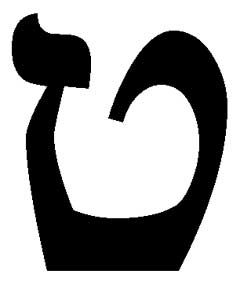
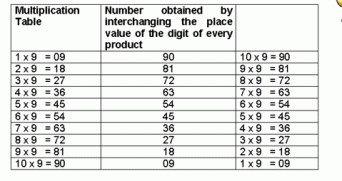
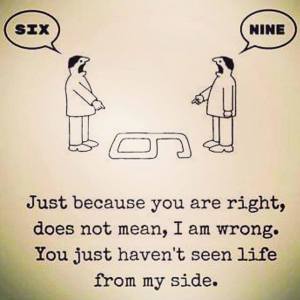 The dualism continues with the Hebrew tet if one considers the modern numeral 9. It appears to be an inverted 6 — the number for both man and the beast. This question from the very beginning is one that we all must answer. Will you be a man created in the image of Elohim or will you, in the end, be found marked with the image of the beast? When the Creator turns us upside down in judgment (9), either a man or a beast (6) will be revealed.
The dualism continues with the Hebrew tet if one considers the modern numeral 9. It appears to be an inverted 6 — the number for both man and the beast. This question from the very beginning is one that we all must answer. Will you be a man created in the image of Elohim or will you, in the end, be found marked with the image of the beast? When the Creator turns us upside down in judgment (9), either a man or a beast (6) will be revealed.